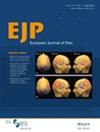Assessing signs of central sensitization: A critical review of physiological measures in experimentally induced secondary hyperalgesia
Abstract
Background and Objectives
Central sensitization (CS) is believed to play a role in many chronic pain conditions. Direct non-invasive recording from single nociceptive neurons is not feasible in humans, complicating CS establishment. This review discusses how secondary hyperalgesia (SHA), considered a manifestation of CS, affects physiological measures in healthy individuals and if these measures could indicate CS. It addresses controversies about heat sensitivity changes, the role of tactile afferents in mechanical hypersensitivity and detecting SHA through electrical stimuli. Additionally, it reviews the potential of neurophysiological measures to indicate CS presence.
Databases and Data Treatment
Four databases, PubMed, ScienceDirect, Scopus and Cochrane Library, were searched using terms linked to ‘hyperalgesia’. The search was limited to research articles in English conducted in humans until 2023.
Results
Evidence for heat hyperalgesia in the SHA area is sparse and seems to depend on the experimental method used. Minimal or no involvement of tactile afferents in SHA was found. At the spinal level, the threshold of the nociceptive withdrawal reflex (RIII) is consistently reduced during experimentally induced SHA. The RIII area and the spinal somatosensory potential (N13-SEP) amplitude are modulated only with long-lasting nociceptive input. At the brain level, pinprick-evoked potentials within the SHA area are increased.
Conclusions
Mechanical pinprick hyperalgesia is the most reliable behavioural readout for SHA, while the RIII threshold is the most sensitive neurophysiological readout. Due to scarce data on reliability, sensitivity and specificity, none of the revised neurophysiological methods is currently suitable for CS identification at the individual level.
Significance
Gathering evidence for CS in humans is a crucial research focus, especially with the increasing interest in concepts such as ‘central sensitization-like pain’ or ‘nociplastic pain’. This review clarifies which readouts, among the different behavioural and neurophysiological proxies tested in experimental settings, can be used to infer the presence of CS in humans.


 求助内容:
求助内容: 应助结果提醒方式:
应助结果提醒方式:


